#Free Continuous Integration APIs
Explore tagged Tumblr posts
Text
Unleash the Power of Rewards: A Comprehensive Earning Platform

Demo : https://cancoda.com
User Features:
🏠 Home Page Create a captivating first impression with a dynamic landing page that showcases an array of rewarding opportunities available at your users' fingertips.
💰 Earn Page Maximize your users' earning potential by offering a diverse range of options, such as engaging surveys, custom offers, and more. Provide endless earning opportunities that keep users coming back.
💳 Cash Out Page Allow users to seamlessly convert points into real-world value with multiple payout methods. Admins can add custom methods, including cash, skins, and gift cards, offering flexibility for every user.
🏆 Leaderboard Encourage healthy competition with a dynamic leaderboard, motivating users to earn more and reach the top.
🌟 Daily Winners Highlight daily winners to celebrate their achievements and keep excitement high. Reward dedication and encourage ongoing participation.
📈 Transactions Page Ensure transparency and trust by enabling users to easily track their transaction history, offering a seamless and reliable earning experience.
📊 Analytics Gain valuable insights into user behavior, offer performance, and overall site engagement. Use these insights to make data-driven decisions for continuous growth and improvement.
🔥 Live Offer Walls Provide users with real-time access to top-performing offer walls, keeping the opportunities fresh and abundant for maximum engagement.
👥 Community Foster a vibrant, interactive community where users can connect, share tips, and celebrate their rewards journey together.
🆘 Support Our dedicated support section ensures prompt assistance, guaranteeing a seamless experience for both administrators and users alike. Your success is our priority!
Admin Features:
Comprehensive Control for Seamless Management
🏠 Home Page Customization Easily update content and layout to match your brand’s vision. Personalize the website to provide a unique experience for users.
👥 User Management Effortlessly manage user accounts, ensuring smooth operations and enhancing user retention.
💳 User Withdrawals Handle withdrawals efficiently, offering timely payouts through various methods to keep users satisfied.
🚫 Banned Users Maintain a secure and respectful community by managing banned users effectively.
💬 User Chat Enable real-time communication between users to foster collaboration, interaction, and engagement.
🔄 Referral Settings Boost platform growth with a powerful referral system that incentivizes existing users and attracts new ones.
📱 Social Media Integration Expand your reach by seamlessly connecting with social media platforms, driving organic growth and increasing exposure.
📊 Manage Offers Control the offers available to users, ensuring a diverse selection that maximizes their earning potential.
💵 Payment Methods Customize the payout options to offer users a variety of convenient and flexible methods.
🚀 Live Offer Walls Stay competitive by keeping live offer walls up to date with the latest opportunities, providing users with fresh, lucrative options.
⚙️ Settings Refine platform settings to optimize performance and deliver a seamless, user-friendly rewards experience.
API and Offer Integration
Manage and customize API integrations for various networks, including:
Torox
Adgatemedia
Lootably
Revlum, etc.
Add custom offers and offer walls in the same way as API offers, ensuring a flexible, customizable rewards system.
Postbacks & Analytics Access all postback URLs for networks in one centralized location. Manage and monitor data effectively to make informed decisions.
Free Features Enjoy access to a variety of features, including multiple postbacks, all at no additional cost.
cancoda - Overview
https://www.linkedin.com/in/hansaldev/
6 notes
·
View notes
Text
Voice API Integration for Global Business: Why Internet-Based Calling Is Ideal for International Communication
API technology has revolutionized the way businesses communicate globally, and she is now considering the benefits of integrating voice API into her company's communication system. They are looking for a more efficient and cost-effective way to connect with clients and partners across the world. With the rise of internet-based calling, he can now make high-quality voice calls over the internet, eliminating the need for traditional phone lines. This technology has become increasingly popular among businesses, and they are now adopting it as a primary means of international communication.
She understands that traditional phone systems can be expensive, especially when making international calls. They often involve complex infrastructure, maintenance, and high call rates. On the other hand, internet-based calling offers a more flexible and scalable solution. He can easily integrate voice API into his existing communication system, allowing him to make and receive calls from anywhere in the world. This technology also provides a range of features such as call recording, conferencing, and contact management, making it an ideal solution for global businesses.
They are also aware of the benefits of using internet-based calling for customer service. He can now offer 24/7 support to his clients, regardless of their location. This technology also enables him to route calls to specific agents or departments, ensuring that customers get the help they need quickly. She can also use Voice Service API to automate certain tasks, such as appointment scheduling and order tracking, freeing up staff to focus on more complex issues. By providing excellent customer service, they can build trust and loyalty with their clients, leading to increased sales and revenue.
In addition, he is looking at the security features of voice API integration. They understand that traditional phone systems can be vulnerable to hacking and eavesdropping. On the other hand, internet-based calling uses advanced encryption and authentication protocols to ensure that calls are secure and private. She can also use voice API to monitor and analyze call data, helping him to identify areas for improvement and optimize his communication system. By using voice API, they can protect their business from cyber threats and maintain the confidentiality of their communications.
Overall, they believe that voice API integration is the future of global business communication. He can now connect with clients and partners from anywhere in the world, at a lower cost and with greater flexibility. She can also use this technology to improve customer service, increase productivity, and enhance security. As they continue to expand their business globally, they will likely rely on internet-based calling as a primary means of communication, and they are confident that voice API integration will play a key role in their success. They are excited to explore the full potential of this technology and see how it can help them achieve their business goals.
#voice api#voip services#voice api integration#business voice solutions#best voip for small business#best business voip providers
2 notes
·
View notes
Text
7 Reasons Why Professionals Should Choose a No-Code Mobile App Builder

In today's fast-paced digital landscape, professionals across various industries are increasingly turning to no-code mobile app builders as their go-to solution for app development. These platforms empower users with limited or no programming experience to create robust mobile applications swiftly and efficiently. Discover the best no-code mobile app builder! Learn why professionals are choosing this innovative tool for seamless app development. This article explores the key reasons why professionals should consider adopting no-code app builders for their next mobile app project.
Accessibility and Ease of Use
No-code mobile app builders democratize app development by eliminating the need for extensive coding knowledge. They offer intuitive drag-and-drop interfaces and pre-built templates that allow professionals from diverse backgrounds to create fully functional apps with minimal learning curve.
Rapid Prototyping and Time Efficiency
Professionals often face tight deadlines and the need for quick iterations. No-code app builders enable rapid prototyping, allowing users to visualize and test app ideas swiftly. This agility in development accelerates time-to-market, giving professionals a competitive edge in their respective industries.
Cost-Effectiveness and Budget Control
Traditional app development can be prohibitively expensive, requiring hiring developers and investing in infrastructure. No-code platforms significantly reduce costs by eliminating the need for a dedicated development team. Professionals can allocate resources more efficiently, focusing on app functionality and user experience rather than backend complexities.
Flexibility and Customization Options
Despite being no-code, modern app builders offer extensive customization capabilities. Professionals can tailor apps to specific business needs, incorporating unique branding elements and functionalities. Advanced features such as API integrations and data analytics ensure that apps remain robust and scalable as business requirements evolve.
Empowerment of Non-Technical Teams
No-code app builders empower professionals across departments, not just IT specialists. Marketing teams can create promotional apps, sales teams can develop customer engagement tools, and HR departments can streamline internal processes—all without relying on technical resources. This democratization of app development fosters innovation and collaboration within organizations.
Seamless Integration with Existing Systems
Integrating new apps with existing IT infrastructure can be a daunting task. No-code platforms simplify this process through plug-and-play functionalities and seamless integrations with popular business software and cloud services. Professionals can leverage existing data and workflows, ensuring compatibility and continuity across platforms.
Scalability and Future-Proofing
As businesses grow, so do their app requirements. No-code app builders offer scalability without the overhead of rewriting code or rebuilding applications from scratch. Professionals can easily update and expand app functionalities as their user base expands or new business opportunities arise, future-proofing their digital investments.
Conclusion
The adoption of no-code mobile app builders represents a paradigm shift in how professionals approach app development. These platforms empower individuals and organizations to innovate rapidly, reduce costs, and maintain flexibility in an increasingly digital world. By leveraging the accessibility, speed, and cost-effectiveness of no-code solutions, professionals can drive business growth, enhance productivity, and stay ahead of the competition. Discover the best no-code Shopify mobile app builder for professionals! Explore 7 compelling reasons why you should choose this hassle-free solution to create powerful mobile apps. Start building today! Whether you're a startup entrepreneur, a small business owner, or a corporate executive, embracing no-code app development can unlock new opportunities and propel your digital initiatives to new heights.
#best no-code mobile app builder#drag and drop mobile app builder#white label mobile app builder#no-code mobile app builder#mobile app builder#best mobile app builder
2 notes
·
View notes
Text
OpenPhone is a modern business phone system designed for startups, small businesses, and growing teams. It offers a range of features to streamline communication and improve professional interactions. Here is a detailed review of its features and functionalities:
Key Features
Phone Numbers:
Local and Toll-Free Numbers: OpenPhone provides users with the option to choose local or toll-free numbers, enhancing accessibility and professional presence.
Port Existing Numbers: Businesses can port their existing phone numbers to OpenPhone, ensuring continuity and avoiding disruption.
Call Management:
Call Forwarding: Users can forward calls to different numbers, ensuring important calls are never missed.
Call Routing: Advanced call routing options allow businesses to direct calls based on time, availability, or team member roles.
Voicemail Transcription: Voicemails are transcribed and sent as text messages, making it easier to read and respond quickly. Messaging:
SMS and MMS: OpenPhone supports sending and receiving SMS and MMS, allowing businesses to communicate with customers via text.
Shared Inboxes: Teams can share inboxes, making it easy to manage and respond to messages collaboratively.
Automated Texts: Users can set up automated text responses for missed calls or other triggers, ensuring prompt communication. Integrations:
CRM and Productivity Tools: OpenPhone integrates with popular tools like HubSpot, Slack, Zapier, and Google Contacts, enhancing workflow and productivity.
API Access: For more advanced needs, OpenPhone offers API access, allowing businesses to create custom integrations and automate workflows.
Collaboration:
Team Management: Teams can be organized within OpenPhone, with the ability to assign numbers and manage communication collaboratively.
Internal Notes: Team members can leave internal notes on conversations, facilitating better context and collaboration.
Caller ID and Call Recording:
Custom Caller ID: Businesses can customize their caller ID to display their company name, ensuring brand consistency.
Call Recording: Calls can be recorded for quality assurance, training, and compliance purposes, with easy access to recordings.
Mobile and Desktop Apps:
Cross-Platform Access: OpenPhone is available on both mobile and desktop, allowing users to make and receive calls from any device.
Unified Experience: The user interface is consistent across platforms, ensuring a seamless experience. Pros
Ease of Use: OpenPhone’s user-friendly interface makes it easy for teams to set up and use, without requiring extensive training.
Cost-Effective: The pricing is competitive, making it an attractive option for startups and small businesses.
Flexibility: Features like shared inboxes, call routing, and integrations provide flexibility to accommodate various business needs.
Modern Features: Advanced features such as voicemail transcription, automated texts, and API access offer functionality beyond traditional phone systems.
Cons Limited International Features: While OpenPhone supports international calls, its primary focus is on the US and Canada, which may limit its utility for businesses with a global presence.
Feature Depth: Some advanced telephony features available in more established business phone systems might be missing or less robust in OpenPhone.
Scalability: While suitable for small to medium-sized teams, very large organizations might find limitations in scalability or require more complex solutions.
OpenPhone is a modern and flexible business phone system that caters well to startups, small businesses, and growing teams. Its ease of use, competitive pricing, and range of features make it a strong contender in the business communication space. Although it may not offer all the advanced features of more established systems, its integrations, collaboration tools, and modern functionalities provide significant value for teams looking to streamline their communication processes.
4 notes
·
View notes
Text
Elevating Your Full-Stack Developer Expertise: Exploring Emerging Skills and Technologies
Introduction: In the dynamic landscape of web development, staying at the forefront requires continuous learning and adaptation. Full-stack developers play a pivotal role in crafting modern web applications, balancing frontend finesse with backend robustness. This guide delves into the evolving skills and technologies that can propel full-stack developers to new heights of expertise and innovation.

Pioneering Progress: Key Skills for Full-Stack Developers
1. Innovating with Microservices Architecture:
Microservices have redefined application development, offering scalability and flexibility in the face of complexity. Mastery of frameworks like Kubernetes and Docker empowers developers to architect, deploy, and manage microservices efficiently. By breaking down monolithic applications into modular components, developers can iterate rapidly and respond to changing requirements with agility.
2. Embracing Serverless Computing:
The advent of serverless architecture has revolutionized infrastructure management, freeing developers from the burdens of server maintenance. Platforms such as AWS Lambda and Azure Functions enable developers to focus solely on code development, driving efficiency and cost-effectiveness. Embrace serverless computing to build scalable, event-driven applications that adapt seamlessly to fluctuating workloads.
3. Crafting Progressive Web Experiences (PWEs):
Progressive Web Apps (PWAs) herald a new era of web development, delivering native app-like experiences within the browser. Harness the power of technologies like Service Workers and Web App Manifests to create PWAs that are fast, reliable, and engaging. With features like offline functionality and push notifications, PWAs blur the lines between web and mobile, captivating users and enhancing engagement.
4. Harnessing GraphQL for Flexible Data Management:
GraphQL has emerged as a versatile alternative to RESTful APIs, offering a unified interface for data fetching and manipulation. Dive into GraphQL's intuitive query language and schema-driven approach to simplify data interactions and optimize performance. With GraphQL, developers can fetch precisely the data they need, minimizing overhead and maximizing efficiency.
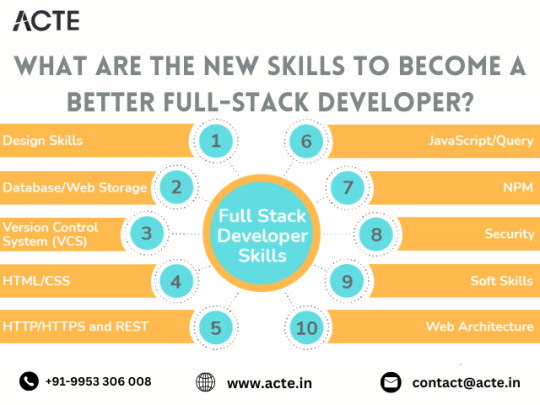
5. Unlocking Potential with Jamstack Development:
Jamstack architecture empowers developers to build fast, secure, and scalable web applications using modern tools and practices. Explore frameworks like Gatsby and Next.js to leverage pre-rendering, serverless functions, and CDN caching. By decoupling frontend presentation from backend logic, Jamstack enables developers to deliver blazing-fast experiences that delight users and drive engagement.
6. Integrating Headless CMS for Content Flexibility:
Headless CMS platforms offer developers unprecedented control over content management, enabling seamless integration with frontend frameworks. Explore platforms like Contentful and Strapi to decouple content creation from presentation, facilitating dynamic and personalized experiences across channels. With headless CMS, developers can iterate quickly and deliver content-driven applications with ease.
7. Optimizing Single Page Applications (SPAs) for Performance:
Single Page Applications (SPAs) provide immersive user experiences but require careful optimization to ensure performance and responsiveness. Implement techniques like lazy loading and server-side rendering to minimize load times and enhance interactivity. By optimizing resource delivery and prioritizing critical content, developers can create SPAs that deliver a seamless and engaging user experience.
8. Infusing Intelligence with Machine Learning and AI:
Machine learning and artificial intelligence open new frontiers for full-stack developers, enabling intelligent features and personalized experiences. Dive into frameworks like TensorFlow.js and PyTorch.js to build recommendation systems, predictive analytics, and natural language processing capabilities. By harnessing the power of machine learning, developers can create smarter, more adaptive applications that anticipate user needs and preferences.
9. Safeguarding Applications with Cybersecurity Best Practices:
As cyber threats continue to evolve, cybersecurity remains a critical concern for developers and organizations alike. Stay informed about common vulnerabilities and adhere to best practices for securing applications and user data. By implementing robust security measures and proactive monitoring, developers can protect against potential threats and safeguard the integrity of their applications.
10. Streamlining Development with CI/CD Pipelines:
Continuous Integration and Deployment (CI/CD) pipelines are essential for accelerating development workflows and ensuring code quality and reliability. Explore tools like Jenkins, CircleCI, and GitLab CI/CD to automate testing, integration, and deployment processes. By embracing CI/CD best practices, developers can deliver updates and features with confidence, driving innovation and agility in their development cycles.
#full stack developer#education#information#full stack web development#front end development#web development#frameworks#technology#backend#full stack developer course
2 notes
·
View notes
Text
Loving Travis
For most of my open-source software projects, I use the Actions platform built into GitHub for CI (continuous integration). GitHub Actions provides virtual machines to run workflows, so I don't have to administer build environments for Linux, MacOS, Windows, and so on. It's modern, convenient (if you use GitHub instead of, say, GitLab), fairly reliable, and (best of all) free (for public repos).
For me, the main limitation of Actions is that all their hosted runners use the x64 architecture. Sometimes I want to build and/or test on Arm CPUs---for instance my Libbulletjme project, which has a bunch of platform-sensitive C++ code.
For Libbulletjme, I still depend on the older TravisCI platform, run by a private firm in Berlin. In addition to a huge selection of build environments based on AMD CPUs, Travis also provides Arm-based Linux environments. (Officially, they're a "beta-stage" feature, but they've been in beta for years.) Like Actions, Travis is also free to open-source projects, though their notion of "open-source" seems a bit stricter than GitHub's.
I mention Travis because my experiments with the Vulkan API exposed a limitation in Libbulletjme, which led me to begin work on a new release of Libbulletjme, which led me to discover an issue with Travis's Arm-based build environments. A recent change to these environments caused all my Arm-based builds to fail. I could only go a bit further with Vulkan before I would have to make hard choices about how to work around the limitations of Libbulletjme v18.5.0 .
At 20:09 hours UTC yesterday (a Sunday), I e-mailed TravisCI customer support and explained my issue. At 12:25 hours UTC today, Travis announced a hotfix to solve my issue. That's pretty good turnaround, for a non-paying customer having issues with a "beta-stage" feature on a summer weekend.
Bottom line: I still love Travis. <3
#continuous integration#vulkan#computer architecture#software engineering#open source#github#hosting#upcoming releases#customer support#making progress#software testing#war stories#love#berlin
3 notes
·
View notes
Text
What Are Effective Strategies for Developing CRM Software?
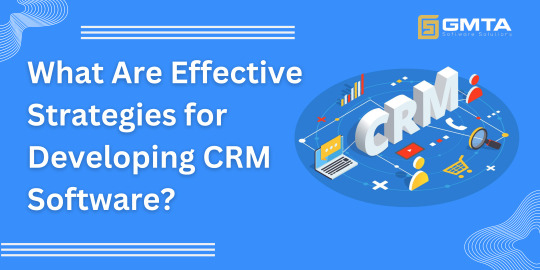
Is CRM software essential for firms looking to increase revenue and customer satisfaction? You might be interested in studying effective strategies for developing CRM software. Customer relationship management (CRM) solutions are among the fastest-growing business software. CRM handles all client data. Your organization can better assist and engage with consumers using this solution.
Effective Strategies for Developing CRM Software:
Here, we discuss ten tried-and-true, effective strategies for developing CRM software that provides a good user experience and functionality.
Modifying Websites for Mobile Use:
Effective strategies for developing CRM software must include mobile optimization as a key component. Users can access vital information and complete crucial activities while on the road thanks to a combination of responsive design and specialized mobile applications. Making the CRM system mobile-friendly increases flexibility and usefulness in the 21st-century corporate world.
Expert Market Analysis:
Effective strategies for developing CRM software are built on the foundation of thorough market research. It is crucial to understand the specific needs of companies in various sectors. The success and efficiency of a customer relationship management solution hinges on its ability to respond to actual business needs. Therefore, it’s important first to determine what those needs are.
Designing for the end user:
Effective strategies for developing CRM software must prioritize user-centric design. The interface must be easy to use and attractive. Human-centered design boosts software uptake and user satisfaction by emphasizing user requirements. A customer relationship management system’s effectiveness depends heavily on its design quality.
Ability to Make Changes:
Effective strategies for developing CRM software focus on allowing for a high degree of personalization. With the system’s adaptable fields, processes, and modules, organisations may meet their unique requirements with minimal effort. By incorporating the CRM solution into the user’s routine in a special way, customization improves the user experience and increases the likelihood of long-term engagement.
Flexibility and scalability:
The demands of a business and will expand over time; therefore, the best CRM software must be flexible. The capacity to scale up means the programme can accommodate more users, data, and transactions without slowing down. The CRM’s open design allows for simple connection with other platforms, creating a unified company environment and increasing productivity.
Keeping Your Data Safe and Legal:
Effective strategies for developing CRM software must prioritize implementing robust data security safeguards. Data encryption, restricted access, and routine security checks keep private client information safe. In addition, demonstrating a dedication to data privacy and earning clients’ confidence by compliance with data protection rules like GDPR, HIPAA, and CCPA is a win-win.
Capabilities for Integration:
A key component of effective strategies for developing CRM software is seamless interaction with other company tools and apps. Connectors and APIs simplify data flow between systems, leading to a unified corporate environment. Integration improves the CRM’s functionality and facilitates efficient data centralization for enterprises.
Iterative and Constant Testing:
Effective strategies for developing CRM software are based on continuous testing and iteration. Functional and performance testing, as well as other forms of quality assurance testing, help find and fix problems quickly. Implementing regular updates based on user feedback during the iterative development process guarantees a robust, bug-free CRM system that meets user expectations.
Full Instruction and Backing:
Effective strategies for developing CRM software must include comprehensive training programmes. Users are more likely to be pleased with software if they understand and use its features and functions. Customer service that quickly responds to questions, concerns, and alterations helps users get the most out of the CRM.
Analytics and Performance Measurement:
Performance monitoring and analytics are crucial to establishing effective strategies for developing CRM software. You can learn much about your users and how they interact with your system using analytics tools. Decisions based on performance analytics and monitoring improve the CRM system and the user’s experience.
Considerations for a Custom Customer Relationship Management System
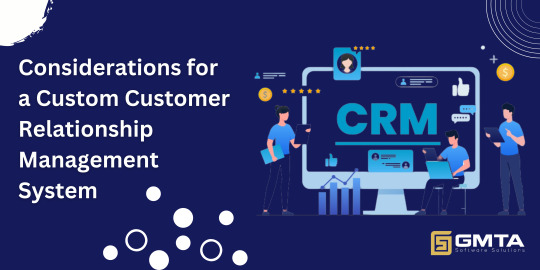
Before planning its creation, you must know what features and functionality you want in your best CRM. If you skip this stage, you may wind up with a solution that doesn’t mesh well with your operations or needs more flexibility to accommodate future growth. The key considerations are as follows:
Aims of the Company:
Define your goals for your web application development company when using a customer relationship management system, such as growing your business, decreasing costs, improving your strategy, etc. The next step is to figure out how to get there using service automation.
Groups of Users:
To determine what features to provide, create profiles for each category of best CRM for small business users. Many companies use CRM for sales, marketing, and support. This method makes determining data access easy.
Criteria for functionality:
Think like a user and explain how each user type may best utilize your CRM to achieve their aims.
Standards for quality:
Jot down the key features of the CRM software development company you want, such as how fast it will function, how secure it will be, what kind of statistics it will provide, how well it will integrate with other tools, how strictly it will comply with standards, etc. Next, consider how you would check to see if the criteria have been satisfied.
Using Custom CRM Software Has the Following Advantages:
The most popular benefits of CRM software system include
It would help if you didn’t have to pay cash for unused features:
CRM for small business products may not satisfy your needs. Some situations require more. Those features need a higher price or upgrade. Your company may not need the plethora of extra features in the more expensive models. Therefore, it will be more economical for you to develop CRM software from scratch.
Easily connect CRM with existing processes:
Many customers relationship management (CRM) platforms come preconfigured with standard marketing, sales, and support processes. It may only meet some of your specific requirements for a commercial setting. If you want to use it effectively throughout the company, you may need to change your existing workflows.
Custom CRM software creation allows you to tailor your system to function harmoniously with your current procedures. Additionally, you are free to automate any processes you see suitable.
Each division may keep doing what they do best while using its own CRM system for the development company.
Direct the customer experience and gain crucial information:
Having this control over the client journey is a major benefit of adopting custom-built CRM software. You can improve your customer’s experience at every stage of their interactions with your company, from order placement and status checking through billing and problem addressing.
The same holds for information gathered from and about customers. Enterprise-level customer relationship management solutions provide top app development companies access to data like client demographics. However, they will need to give the precise information you need to comprehend your consumer thoroughly.
Building your customer relationship management software allows you to select specific criteria for generating detailed reports, so hire the best CRM software development company.
Creating a robust, dependable, and user-friendly CRM system depends heavily on implementing these ten effective strategies for CRM software development.
Website and mobile app development businesses can create CRM software that meets and exceeds user expectations by prioritizing user needs, guaranteeing customization, scalability, and security, focusing on mobile optimization, seamless integration, continuous testing, and comprehensive support.
1 note
·
View note
Text
The Moxy Platform uses blockchain technology to provide a trustworthy Global eSport Token
INTRODUCTION

Moxy claims to be the first and only eSports gaming platform to solve this gap in the industry. There are primarily two components needed for this to occur:
First, developers need access to a simple web3-free tech stack that allows them to add eSport game types to their games.
Second, there has to be a way for the eSport-ready players to get their hands on the game's eSport-enabled build. Nowhere. There is currently no eSports platform accessible to the general public.
You can get both of these features and more via the Moxy Platform. The Moxy Platform uses blockchain technology to provide a trustworthy Global eSport Token, MOXY, which allows instantaneous transactions and safeguards players and publishers against fraud, hacking, and other forms of cybercrime. The Moxy Platform is well-positioned to pioneer this emerging subgenre of video games, as seen by its rapidly expanding user base, novel approaches to game integration, and almost limitless competitive game types offering real prizes in actual games.
THE ECOSYSTEM OF MOXY
Making a platform for esports requires more than just adding a competitive mode to a game. The Moxy Ecosystem is comprised of numerous interdependent parts, such as:
Player Verification for eSports - For legal and safety reasons, players need to be "eSport ready" before they can take part in "Real Competition." A verification process is obligatory for all Moxy Club users.
MOXY - The Global eSports Token, a universal medium of exchange for competitive video gaming.
Moxy's Admin Dashboard - Members, statistics, collectibles and games that members want to be funded and published are all managed here.
The Moxy Club - Moxy Club provides eSport-ready players, the game marketplace, and the game launcher, centralizes all transactions from all games, lets players purchase and administer MOXY, and simplifies governance through voting.
Forge Moxy - This is the primary set of APIs that facilitates communication between games and allows for the creation of eSports.
Founded on Moxy - As a developer, you'll have access to Foundry. To get their games into the Forge, developers must first publish them to Foundry and receive an API key.
Rewarding Moxy Governance - The development of the Moxy Platform relies on the votes cast by Moxy Club members. Members of the Moxy Club who are actively participating and meeting their responsibilities will earn MOXY.
Platform for Moxy- Economy based on the MOXY token and the Flow network. The Moxy Platform is a token economy developed from the ground up, complete with patented smart contracts and an offline signature system written in Cadence.
Token of Play - Secure token balance that no one can hold. As the player base increases, the Moxy Ecosystem converts PLAY tokens into fresh MOXY.

KEY POINTS OF THE MOXY PLATFORM
The following claims are assumed to be correct and empirically verifiable:
• Global eSports can't happen without MOXY, the Global eSport Token.
• There will soon be a fourth subgenre of video games, and it's competitive online play known as eSports. There are now three types of gaming devices on the market: consoles, computers, and smartphones.
• Only blockchain technology offers any hope of ensuring the safety of esports games played in front of an international audience.
• The continued interest in video games depends on the inclusion of eSports game types where players may compete for cash prizes.
PROOF OF PLAYTM, PLAY SCORE, PLATFORM ENGAGEMENT REWARDS SYSTEM
There are three components of the Moxy Ecosystem that must be in sync for the "Proof of Play" incentive system to be implemented. There are three main components: the PLAY token, the SCORE token, and Proof of PlayTM events.
First is the PLAY token. A system must provide daily prizes for Moxy Club members' involvement. That mechanism is PLAY token. It's a worldwide balance that all Moxy Club members can see and generates a daily variable payout to qualified members. As Moxy Club membership grows, so will distribution. No one can own or sell PLAY tokens. PLAY token holders create MOXY, which must be delivered to Moxy Club members because the PLAY token wallet cannot retain it.
Moxy Club members only earn SCORE tokens. SCORE tokens are untradeable. SCORE is acquired through playing games, voting, participating in eSport events, buying games, and more. These behaviors receive different SCORE. Daily incentives increase with SCORE. This rewards active Club members most.
TECHNOLOGY OF MOXY
The Moxy Platform was developed with the Flow Ecosystem in mind. By partnering with Dapper Labs, Moxy is able to take use of the robust and resilient Flow ecosystem. The Moxy Platform could only accept Flow since it fulfilled all of the necessary criteria. The Moxy Platform is based on Flow because of its extensive technology stack, token mechanisms, pre-existing stablecoin and collectibles ecosystem, smart contract architecture, developer tools, and customer support.
Token Flow: The Moxy Foundation keeps MOXY reserves and will sell new MOXY to Moxy Club members based on events and milestones. The inaugural public sale distributes MOXY to the first Moxy Club members who want to play eSports. MOXY will be introduced if new games increase membership demand. For new Moxy Club members to play eSport game types, the Moxy Foundation will assign tokens from the appropriate internal wallet to the "Sale" wallet.
Token Flow Synopsis: The Moxy Club's "hot" wallet is the Moxy Foundation's sale wallet. This wallet accepts credit cards and USDC for MOXY purchases. Moxy Club members may always check the Sale wallet balance and MOXY pricing. Moxy Foundation funds the Sale wallet. The Moxy Foundation may transfer one million MOXY from the Treasury to the Sale wallet. In conclusion, the Moxy Foundation will distribute MOXY and move it from internal cold wallets to public "Sale" wallets.
Token Lifecycle: A Moxy Club member often purchases MOXY through the Sale wallet. Next, the user must deposit MOXY for eSport gaming into their wallet's "Authorized Gaming Balance." The Authorized Gaming Balance's MOXY can be used in any Moxy-enabled game. When the user opens a game, a specific amount of this balance will be shown in the game and utilized, at the player's discretion, when they engage an eSport game mode.
eSport User Flow: Moxy Club membership is required. They must submit KYC paperwork after logging in. The user will automatically receive a wallet after verification. The wallet will pay membership fees. The first MOXY placed to the wallet will cover the Association membership fee. If the membership criterion is 5 MOXY, the member's wallet will redirect the initial 5 MOXY to the Moxy Foundation treasury wallet. One transaction or several transactions.
TOKENOMICS
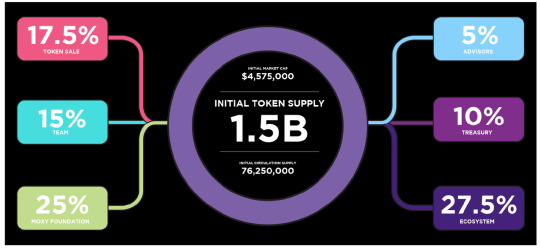
For more information visit:
WEBSITE: https://moxy.io/ WHITEPAPER: https://moxy.io/whitepaper/ TWITTER: https://twitter.com/moxyio TELEGRAM: http://t.me/moxyofficial INSTAGRAM: https://www.instagram.com/moxy.io/ LINKEDIN: https://www.linkedin.com/company/Moxyio/ DISCORD: http://discord.gg/moxyio
AUTHOR
Forum Username: Java22 Forum Profile Link: https://bitcointalk.org/index.php?action=profile;u=3443255 BEP-20 Wallet Address: 0x39aEF5f1cf37c0f1d015435F592Ce632720cB713
1 note
·
View note
Text

The Manual Tester to Automation Engineer Career Path
Transitioning from manual tester to automation engineer is a strategic career move that many professionals in the software testing industry aspire to make. As technology continues to evolve at a rapid pace, the demand for automation testing skills is increasing. Manual testers who wish to stay relevant and advance in their careers must acquire automation testing skills to meet industry demands. This article will outline the career path from manual tester to automation engineer and provide valuable insights on how to make a successful transition in this competitive field.
The Current Landscape of Software Testing: Manual vs. Automation
In today's software testing landscape, a significant shift towards automation is evident. While manual testing remains essential for certain scenarios requiring human judgment, automation testing offers numerous benefits in terms of efficiency, accuracy, and scalability. Automation tools and frameworks have revolutionized the testing process by enabling faster feedback cycles and continuous integration practices. Understanding the strengths and limitations of both manual and automation testing is crucial for testers looking to excel in their careers. In the next section, we will delve deeper into the key differences between manual and automation testing, highlighting the importance of balancing both approaches for optimal results in software quality assurance. Stay tuned for valuable insights on navigating this dynamic industry landscape.
Essential Skills and Technologies for Aspiring Automation Engineers
Transitioning from a manual tester to an automation engineer requires a solid foundation in key skills and technologies. Proficiency in programming languages such as Java, Python, or JavaScript is essential for developing automation scripts. Familiarity with automation tools like Selenium, Appium, or JUnit will be crucial in implementing robust test cases. Understanding version control systems like Git and continuous integration tools such as Jenkins will streamline your testing pipeline. Moreover, mastering concepts like test data management, API testing, and behavior-driven development (BDD) with tools like Cucumber or SpecFlow will further enhance your automation capabilities. Stay tuned as we uncover more insights on bridging the gap from manual testing to automation engineering success.
Benefits of Transitioning from Manual Testing to Automation Engineering
Transitioning from manual testing to automation engineering brings a myriad of benefits. Automation allows for faster and more efficient testing, resulting in quicker release cycles and improved product quality. With automation, repetitive test cases can be executed seamlessly, freeing up time for manual testers to focus on more strategic testing efforts. Automation also provides better coverage by running tests across different environments and configurations. Additionally, automation engineering offers higher job prospects and better salary potential in the competitive tech industry. Stay tuned for more invaluable insights into the advantages of making the shift from manual testing to automation engineering.
Common Challenges Faced in the Transition and Strategies to Overcome Them
As you embark on the journey from manual testing to automation engineering, you may encounter challenges such as a steep learning curve in mastering automation tools and frameworks, adapting to scripting languages, and ensuring effective test coverage. To tackle these hurdles, consider investing in comprehensive training programs, hands-on practice sessions, and mentorship opportunities. Embrace continuous learning by staying updated with the latest industry trends and best practices. Seek guidance from experienced automation engineers, participate in online forums, and leverage resources like tutorials and webinars. By proactively addressing these challenges, you can elevate your automation skills and smoothly navigate the transition process. Stay tuned for actionable tips on overcoming common obstacles in transitioning to automation engineering.
Training and Certification Options for Automation Engineers
To solidify your skills as you transition from manual testing to automation engineering, consider enrolling in reputable training programs and pursuing relevant certifications. Look for courses that focus on popular automation tools like Selenium, Appium, or Robot Framework. These programs will provide you with in-depth knowledge and hands-on experience to excel in automation testing. Additionally, obtaining certifications such as ISTQB Certified Tester - Foundation Level can boost your credibility and demonstrate your expertise to potential employers. Stay committed to continuous learning and upskilling to stay competitive in the evolving field of automation engineering. Keep an eye out for our upcoming blog posts featuring recommended training resources and certification options for automation engineers.
Embracing the Future of Software Testing through Automation
In conclusion, transitioning from manual testing to automation engineering is a strategic move that aligns with the ever-evolving landscape of software testing. By investing in relevant training programs and certifications, you equip yourself with the necessary skills and knowledge to thrive in automation testing. Embrace the shift towards automation to streamline processes, increase efficiency, and deliver high-quality software products. Continuous learning and staying updated with industry trends will be your keys to success in this dynamic field. Look forward to seizing new opportunities and enhancing your career as an automation engineer. Stay tuned for more valuable insights and recommendations in our future blog posts.
Portfolio : https://hazratali.dev
Blog : https://hazrataliblog.com
Problem Solving : https://hazratalips.com
0 notes
Text
Top 10 Ways Software Developers Leverage ChatGPT to Maximise Productivity
In the current fast-paced world of technology, keeping up means that software developers need to make a constant shift to new cutting-edge tools and techniques. The most revolutionary thing that has happened over the last few years is the advent of AI-driven tools such as ChatGPT. Whether you're a single freelance web developer or part of a large team, ChatGPT can significantly boost your productivity and efficiency. Let's find out the top 10 ways software developers are utilising ChatGPT to accomplish more in less time.
Boilerplate Code Generation
Repeated code writing can exhaust a developer's time and energy. ChatGPT assists by creating boilerplate code for popular frameworks, APIs, or modules. Rather than digging through archived projects or documentation, developers can ask ChatGPT to create skeleton code, which saves them hours each week.
Debugging Aid
Debugging is the most time-consuming aspect of development. ChatGPT can examine error messages, propose potential causes, and even provide solutions. This rapid feedback loop allows developers to fix issues quickly and spend more time building features rather than wrestling with bugs.
Learning New Technologies
Software development is a continually changing arena. ChatGPT is an on-demand tutor who explains emerging programming languages, frameworks, or libraries in plain terms. For freelance web developer professionals working on several projects simultaneously, this in-the-moment knowledge base is priceless.
Writing Unit Tests
Most developers tend to put off writing unit tests since it is a chore. ChatGPT can do this work automatically by creating test cases from the current code. This enhances code quality, in addition to increasing productivity overall.
Code Documentation
Proper documentation tends to take a backseat when there are tight deadlines. ChatGPT assists by creating concise, clean models and README files. This helps ensure projects are maintainable and simple to comprehend for teams and developers for hire in the future.
Brainstorming and Problem Solving
Struggling with a challenging logic puzzle? ChatGPT can assist with brainstorming various methods and algorithms. It's an interactive partner, assisting ChatGPT developers in dividing up complicated problems into easy steps.
Automating Repetitive Tasks
From scripting file transfer automation to installing build pipelines, ChatGPT helps develop small automation tools that leave developers' time free for more creative pursuits.
API Documentation Generation
Developing detailed API documentation is important but time-consuming. ChatGPT can automatically produce formatted and detailed API docs from the codebase or developer input. This eliminates hundreds of hours and maintains documentation current.
Facilitating Communication
Whether you're creating client emails, project proposals, or status reports, ChatGPT can be used to make professional and clear communication. This is particularly helpful for teams that hire remote developers in various time zones and languages.
Code Reviews and Best Practices
ChatGPT can help developers by scanning code snippets for best practices, possible bugs, or security vulnerabilities. It does not serve as a replacement for a human review, but is an additional set of eyes that can identify things early on.
How RapidBrains Can Assist You in Leasing ChatGPT
Embracing AI tools such as ChatGPT is only one aspect of the puzzle of productivity. Having access to competent talent that can best utilise the tools is also vital. RapidBrains helps businesses hire remote developers and connect with experienced ChatGPT developers ready to integrate AI into their workflows. Whether you’re looking for developers for hire for a long-term project or need a freelance web developer for a short-term gig, RapidBrains provides vetted professionals who know how to harness AI tools for software development effectively. Partner with RapidBrains today and empower your development team to reach new productivity heights.
0 notes
Text
The Complete Guide to Streaming App Development in 2025

Streaming applications dominate the digital entertainment landscape. Netflix, Disney+, and Spotify have transformed how people consume content. Businesses recognize the massive potential in creating custom streaming platforms. ideyaLabs specializes in developing cutting-edge streaming applications that captivate audiences and drive revenue growth.
Understanding the Streaming App Ecosystem
Streaming apps deliver audio, video, or multimedia content directly to users' devices. These applications eliminate the need for downloads. Users access content instantly through internet connections. The global streaming market continues its exponential growth trajectory in 2025.
ideyaLabs develops streaming solutions across multiple categories. Video-on-demand platforms allow users to watch movies and shows anytime. Live streaming apps broadcast real-time events and performances. Audio streaming services deliver music and podcasts seamlessly. Educational platforms stream courses and training materials effectively.
Essential Features Every Streaming App Needs
User authentication systems protect content and personalize experiences. ideyaLabs implements secure login mechanisms using various methods. Social media integration simplifies the registration process. Multi-factor authentication adds extra security layers.
Content management systems organize vast media libraries efficiently. Advanced search functionality helps users find content quickly. Categories, genres, and tags improve content discovery. Recommendation engines analyze viewing patterns to suggest relevant content.
Video players form the core of streaming applications. ideyaLabs integrates adaptive bitrate streaming for optimal quality. Playback controls include pause, rewind, and speed adjustments. Subtitle support enhances accessibility for global audiences.
Technical Architecture Behind Streaming Apps
Content delivery networks (CDNs) distribute media files globally. ideyaLabs partners with leading CDN providers for reliable content delivery. Edge servers reduce latency and improve streaming quality. Geographic distribution ensures fast loading times worldwide.
Backend infrastructure handles user requests and data processing. Cloud platforms provide scalable computing resources. Database systems store user profiles, viewing history, and content metadata. API gateways manage communication between frontend and backend components.
Encoding and transcoding prepare content for various devices. ideyaLabs implements automated workflows for content processing. Multiple resolution options accommodate different internet speeds. Format conversion ensures compatibility across platforms.
Monetization Strategies for Streaming Platforms
Subscription models generate recurring revenue streams. ideyaLabs develops flexible pricing tiers for different user segments. Free trials attract new users and demonstrate platform value. Annual plans encourage long-term commitments with discounted rates.
Advertisement integration creates additional revenue opportunities. Pre-roll, mid-roll, and post-roll ads maximize earning potential. Programmatic advertising connects platforms with relevant advertisers. Ad-free premium tiers appeal to users seeking uninterrupted experiences.
Pay-per-view options work well for exclusive content. Live events and premieres command premium prices. Rental periods give users temporary access to specific content. Purchase options allow permanent content ownership.
Platform-Specific Development Considerations
iOS development requires Swift programming and Xcode tools. ideyaLabs follows Apple's Human Interface Guidelines strictly. App Store optimization improves discoverability and downloads. TestFlight enables beta testing before official launches.
Android development uses Kotlin or Java programming languages. Material Design principles guide user interface creation. Google Play Store listing optimization attracts more users. Firebase integration provides analytics and crash reporting.
Web applications reach users across all devices. Progressive web apps offer app-like experiences in browsers. Responsive design adapts layouts for different screen sizes. ideyaLabs ensures cross-browser compatibility for maximum reach.
Security Measures for Content Protection
Digital rights management (DRM) prevents unauthorized content distribution. ideyaLabs implements industry-standard DRM solutions effectively. Encryption protects content during transmission and storage. Watermarking helps identify piracy sources.
User data protection complies with privacy regulations globally. Secure payment processing safeguards financial information. Regular security audits identify potential vulnerabilities. Penetration testing validates security implementations.
Performance Optimization Techniques
Caching strategies reduce server load and improve response times. ideyaLabs implements intelligent caching at multiple levels. Browser caching stores frequently accessed resources locally. Server-side caching minimizes database queries.
Load balancing distributes traffic across multiple servers. Auto-scaling adjusts resources based on demand automatically. Performance monitoring identifies bottlenecks and optimization opportunities. Real-time analytics track key performance indicators.
User Experience Design Principles
Intuitive navigation helps users find content effortlessly. ideyaLabs creates clear menu structures and search functions. Personalized homepages showcase relevant content prominently. Quick access to recently watched items improves convenience.
Responsive design ensures consistent experiences across devices. Touch-friendly interfaces work perfectly on mobile devices. Keyboard navigation supports desktop users effectively. Accessibility features accommodate users with disabilities.
Testing and Quality Assurance Processes
Functional testing verifies all features work correctly. ideyaLabs conducts thorough testing across different scenarios. Automated testing speeds up the quality assurance process. Manual testing catches issues automated tests might miss.
Performance testing ensures smooth streaming under various conditions. Load testing simulates thousands of concurrent users. Network throttling tests behavior on slow connections. Device testing covers popular smartphones, tablets, and smart TVs.
Launch and Marketing Strategies
Beta launches gather valuable user feedback early. ideyaLabs helps clients plan effective soft launch strategies. Limited geographic releases test market reception. Influencer partnerships generate buzz before official launches.
App store optimization improves organic discovery rates. Compelling descriptions highlight unique platform features. Screenshots and preview videos showcase the user experience. Regular updates maintain high store rankings.
Future Trends in Streaming Technology
Artificial intelligence enhances content recommendations significantly. Machine learning algorithms understand user preferences deeply. Natural language processing enables voice-controlled interfaces. Computer vision technology enables interactive content experiences.
Virtual reality streaming creates immersive entertainment experiences. 360-degree videos transport viewers to new environments. Augmented reality overlays enhance traditional content. ideyaLabs stays ahead of emerging streaming technologies.
5G networks enable higher quality streaming everywhere. Ultra-low latency supports real-time interactive content. Edge computing brings processing closer to users. Blockchain technology may revolutionize content distribution and royalties.
Choosing ideyaLabs for Your Streaming App Development
ideyaLabs brings extensive experience in streaming app development. Our team understands the technical complexities involved. We deliver scalable solutions that grow with your business. Our agile development process ensures timely project completion.
Custom streaming applications require specialized expertise. ideyaLabs combines technical knowledge with creative design skills. We help clients navigate the competitive streaming landscape successfully. Our solutions drive user engagement and business growth effectively.
0 notes
Text
Replit Alternatives: 8 Best Cloud Ides For Development
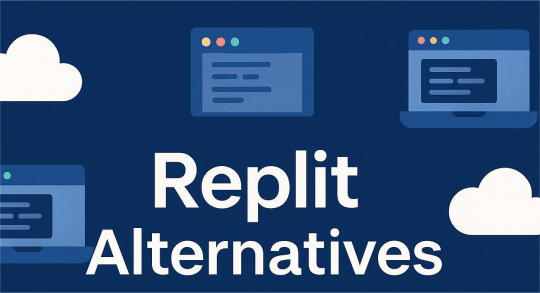
As the development of cloud-based environments continues to improve, many developers are now looking for alternatives to Replit for their code work. Whether looking for faster performance, more advanced features, or specialized testing or development tools, this guide will help you find the right Replit alternative.
What are Replit Alternatives?
Replit alternatives can be considered as cloud based integrated development environments (IDEs) and coding internet platforms which have similar capabilities as Replit but may provide unique capabilities, features, and pricing models. These platform also enable developers to code, collaborate, and deploy app all from their browser, without requiring local development environments.
Why Developers Are Searching for Replit Alternatives
Many developers and teams are moving to Replit alternatives for several reasons:
Performance and Resource Constraints
Replit’s free tier can be limiting, especially for larger applications. Alternatives offer more generous compute resources or scalable performance.
Lack of Advanced Testing
Modern development requires robust testing frameworks—unit, integration, API, and even auto-generated tests. Replit doesn’t focus much on this area.
🔗 Looking to automate your testing workflows? Check out our guide to generating API test cases automatically using tools like Keploy.
Enterprise and Collaboration Features
Enterprises may require granular permission control, compliance features, and advanced team collaboration—many of which are limited or missing in Replit.
Cost Optimization
Pricing models vary widely across platforms. Depending on team size and use case, Replit might not offer the most cost-effective solution.
Need for Specialized Tooling
Projects built on specific frameworks, runtimes, or testing protocols often demand tooling not supported by Replit.
Key Features To Look for in a Replit Alternative
When evaluating alternatives to Replit, keep an eye out for platforms that offer:
Full support for back-end, front-end, and full-stack development
GitHub/GitLab integration for version control
In-browser terminal access and real-time collaboration
Built-in package managers (npm, pip, Maven, etc.)
Automated testing and mocking capabilities
Deployment pipelines or serverless integrations
Support for AI assistants like GitHub Copilot
Top 8 Replit Alternatives for Development
1. GitHub Codespaces - Microsoft's Cloud Development Solution
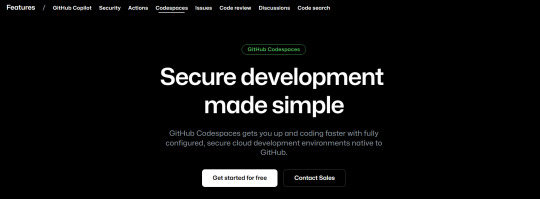
GitHub Codespaces offers an entire development environment in the cloud, powered by VS Code. It's very immersive for developers who are also using GitHub for version control.
Key Features:
Complete VS Code experience in the browser
Seamless integration with GitHub
Pre-configured dev environments
Powerful compute options
Extension marketplace support
Best for: Teams using GitHub, enterprise development, fans of VS Code.
2. GitPod - Open Source Cloud Development
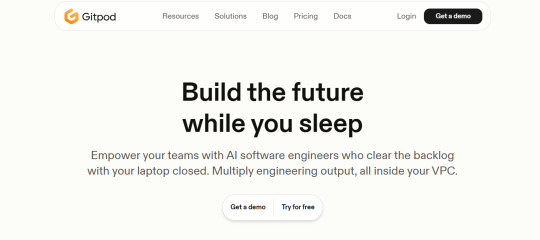
GitPod creates automated dev environments to create new ephemeral development environments for every new task you have. It is built on open-source technologies and offers great Git integrations.
Key Features:
Top Feaures: Automated environments from Git repositories
Support for VS Code and IntelliJ
Collaborative workspaces
Self-hosting options
Vinyl for strong open-source communities
Best For: Open-source projects, teams requiring automation, developers who appreciate the GitPod workflow.
3. CodeSandbox - Frontend Development Powerhouse

CodeSandbox is a leading solution for frontend development projects, particularly for React, Vue, and Angular applications. They offer an ideal tool for prototyping and sharing frontend code.
Key Features:
Great React/Vue/Angular support
Collaborative features
npm package installations
Deploy integrations
Templates
Best For: Frontend developers, React/Vue projects, rapid prototyping
4. AWS Cloud9 - Amazon's Cloud IDE
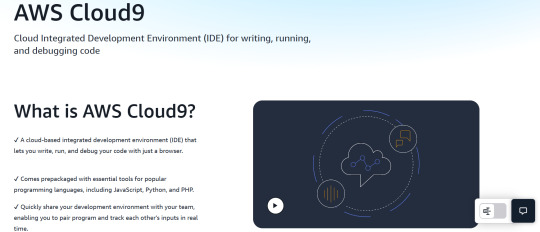
AWS Cloud9 is Amazon's cloud IDE, tightly integrated with AWS services. This makes it a perfect IDE for developers writing code for AWS services.
Key Features:
Direct integration with AWS services
Collaborative coding features
Terminal built in
Debugging features
Lambda development project templates
Best For: Development around AWS, serverless applications, teams using AWS environment.
5. Stackblitz - Instant Web Development
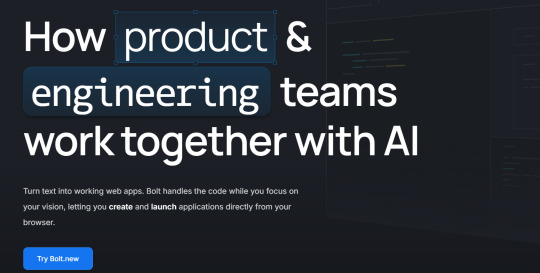
Stackblitz offers instant, full-stack web development environments that boot in what feels like milliseconds. Because it primarily targets modern web frameworks and the npm ecosystem, it is particularly strong on this front.
Key Features:
Incredibly fast boot times
Full npm ecosystem support
Live collaboration
Hot reloading
GitHub integration
Best For: Web development, npm-based projects, rapid prototyping
6. Glitch - Community-Driven Development
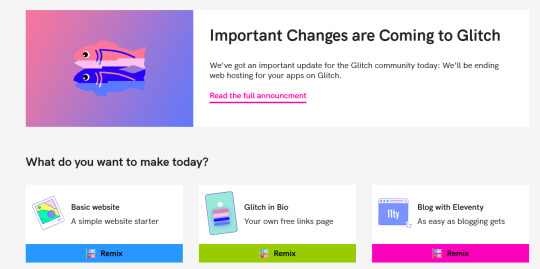
Community-Centric Development Glitch is a combination of a development environment and a social platform. Because of this, it is great for learning, experimentation, and community-centered development.
Key Features:
Community-first platform
Instant app deployment
Remix/fork
Collaboration built in Learning resources
Best For: Beginners, educational projects, community building, experimentation
7. CodePen - Frontend Playground
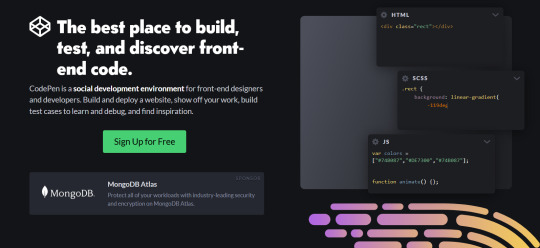
Primarily a frontend development site, CodePen is both a development environment for your journey as a front-end developer and a platform to display HTML, CSS, and JavaScript.
Key Features:
Frontend-focused environment
Social component and community
Templates and snippets to share
Live previews
Educational features
Best For: Front-end education, experimenting with CSS/JS, building your portfolio
8. SourceLair – Minimalist Cloud IDE

SourceLair is an underrated yet powerful IDE that is browser-based. It supports multiple languages and some frameworks with zero set up. This is great for developers looking for a simple experience.
Key Features:
One-click dev environments for Python, PHP, Node.js, etc.
Git integration
Control over your dev environments with very few setups
Preview URLs are SSL enabled
Works with Docker-based projects
Best For: Solo developers, students, lightweight back-end apps
Keploy: A Unique Replit Alternative for API Testing and Automation
If you’re prioritizing testing and backend reliability, Keploy has a value proposition few, if any, platforms can compete with.
Why Keploy?
Auto-generates unit, API, and integration tests
Records real user traffic to create test cases
Mocks dependencies to enable fast and isolated testing
Integrates with your existing CI/CD pipeline
Helps increase test coverage without producing boilerplate code
Best For: QA engineers, back-end developers, test automation-focused startups
Can I Develop Web Applications Using These Replit Alternatives?
Yes, most alternatives to Replit can be used to build web applications and have everything required to deploy:
Full-stack applications: You can develop a complete web application using GitHub Codespaces, GitPod and AWS Cloud9
Front-end applications: CodeSandbox, Stackblitz, and CodePen offer amazing support for front-end web apps
API development: For API development and testing Keploy provides excellent support
Rapid deployment: Glitch provides instant deployment for your rapid web applications.
Best Replit Alternatives for Different Use Cases
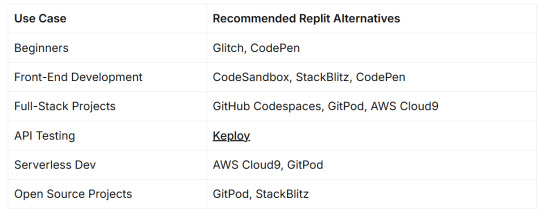
Replit AI vs. GitHub Copilot: Which Is Better?
Both provide AI code assistance, but they differ within an ecosystem:
Replit AI
Works only on Replit
Easier onboarding for beginner developers
Context aware within Replit's workflow
GitHub Copilot
Works in many IDEs
Provides a more extensive list of code suggestions
Works on most of Replit’s alternatives (GitPod, Codespaces, etc.)
How To Choose the Right Replit Alternative
Here's what to consider when selecting a cloud IDE:
Project Requirements – Does the platform support the language or framework you are using?
Testing Requirements – Do you need unit testing or API tests to be automated? Maybe consider Keploy.
DevOps Integration – Can it deploy or connect to your CI/CD pipelines?
Pricing - Are you paying for an abundance of features you won't use?
Team Size – Can you leverage real-time collaboration and/or access permissions?
Start with the free tiers most platforms offer—there's no commitment to try out the options.
Conclusion
Whether you're ramping up a development team, testing out a better workflow, or simply building applications leveraging the newest cloud tools, there are an array of powerful Replit alternatives to check out.
Use GitHub Codespaces when you are using GitHub-native workflows.
Use CodeSandbox or StackBlitz for quick front-end development.
Choose Keploy if automated testing and reliability are your focus.
For quick experiments or beginner learning, choose Glitch or CodePen.
These tools are each designed to help you fill the holes where Replit can leave you - so you code smarter, test faster, and ship better apps in 2025.
FAQs
1. What is Replit used for? Replit is a cloud-based IDE where you can write, run, and deploy code in your web browser. It's fantastic for proactive prototyping, agile collaboration, integrations, and is easy on-boarding across multiple languages, without any local set-up!.
2.Why do people look for a Replit alternative? Developers will look for alternatives when there are performance limitations, access to enterprise features, pricing, testing limitations, and tooling and runtime requirements.
3. Which Replit alternative is best for backend/API testing? Keploy is the best choice for backend or API first development, including AI generated test cases, mock responses in real-time, and CI/CD integration - built for robust backend systems.
4. Can I use GitHub Copilot in Replit alternatives? Yes. Many Replit alternatives, such as GitHub Codespaces, GitPod, and AWS Cloud9, allow you to use GitHub Copilot through extensions, adding an extra layer of powerful AI help with coding.
5. Which Replit alternative is best for frontend development? Front-end developers will like CodeSandbox, Stackblitz, and CodePen the best and they all support frameworks like React, Vue, and Angular and have features like real-time previews and collaboration tools.
6. Can I build full-stack applications on these platforms? Of course GitHub Codespaces, GitPod, and AWS Cloud9 are examples of platforms you can use to build full-stack applications (using both client-side and server-side languages) as they provide terminal access, support for server-side languages, and offer support for deploying applications.
0 notes
Text
🧪 Become a Full Stack Testing Expert – Free Demo by Mr. Mahesh Starts 16th July! 🗓️ Date: 16th July | 🕢 Time: 7:30 AM IST 👨🏫 Trainer: Mr. Mahesh – Senior Test Automation Specialist 🔗 Register Now: https://tr.ee/gSTDJI 🌐 Explore More Courses: https://linktr.ee/ITcoursesFreeDemos 📢 Seats Are Limited – Book Yours Now!
Are you ready to future-proof your career in QA and automation? Join NareshIT’s career-boosting Full Stack Testing program and gain practical, job-oriented skills that today’s IT companies demand. This hands-on course guides you through the complete software testing lifecycle, blending theory and real-time project exposure.

🧪 What This Course Covers: ✅ Software Testing Lifecycle: SDLC, STLC, Bug Tracking ✅ Manual Testing Essentials & Real-Time Test Case Writing ✅ Selenium WebDriver + TestNG + Maven + Automation Frameworks ✅ API Testing with Postman & Automation using REST Assured ✅ Core Java for Test Automation + Git/GitHub Integration ✅ Jenkins CI/CD Pipelines for Continuous Testing ✅ Live Projects, Real-Time Assignments, Resume Coaching ✅ Introduction to Cypress, Playwright, and Cross-Browser Testing
🚀 Key Advantages:
Built for QA professionals, beginners & cross-skillers
Covers end-to-end functional, UI, API, and regression testing
Includes mock interviews, placement help & certification prep
Learn from one of the best trainers with 10+ years of experience
Enhanced coverage of modern test tools and best practices
🎯 Upskill to become an Automation Test Engineer with complete confidence and a competitive edge in the job market.
🎓 Join the Free Demo Now: https://tr.ee/gSTDJI
#QAEngineer#FullStackTesting#SoftwareTestingTraining#SeleniumAutomation#ManualTesting#NareshIT#LearnTesting#AutomationWithJava#TestEngineering#TumblrSEO#PlaywrightTesting#CypressAutomation#TestAutomationBootcamp
0 notes
Text
What is ChatGPT AI?
ChatGPT AI is a powerful language model developed by OpenAI that allows users to have human-like conversations with artificial intelligence. Based on the GPT (Generative Pre-trained Transformer) architecture, ChatGPT uses advanced deep learning techniques to understand and generate natural language text. It has become one of the most popular AI tools on the internet, known for its ability to write essays, answer questions, summarize content, translate languages, code software, and more — all in real time.
ChatGPT has evolved through various versions, beginning with GPT-2 and GPT-3, and now the latest advancements include GPT-4 and GPT-4o. These models have billions of parameters, enabling them to understand context, tone, and even emotions in text. The ChatGPT AI is designed to serve multiple purposes such as education, content creation, customer support, personal assistance, and entertainment.
One of the key features of ChatGPT is its accessibility. The ChatGPT website allows users to sign up for free and start using its basic version. This ChatGPT free access provides an excellent opportunity for students, writers, and professionals to explore AI capabilities without cost. For users who need more features, faster responses, and access to the most powerful models, ChatGPT Plus is available for a subscription fee. This premium version unlocks GPT-4 and enhanced performance.
Many users search for ChatGPT unlimited free versions to bypass limitations, though it’s important to use it within the official platforms to ensure safety and quality. While some platforms falsely promote ChatGBT, ChatGTP, ChatGBT AI, or Chat GBT, these are often typos or imitations of the original ChatGPT tool by OpenAI. It is always recommended to access the official ChatGPT website for genuine services.
What makes ChatGPT AI stand out is its ability to continuously learn from vast datasets and provide relevant, creative, and accurate outputs. Whether you’re chatting casually with Chat GPT, using it to brainstorm ideas, or getting help with complex subjects like coding or science, its utility is unmatched. With the rising demand for AI in day-to-day life, tools like ChatGPT online are setting new standards for how people interact with machines.
Another strong point of Chat AI GPT is its multi-platform availability. It can be used through the web, mobile apps, and API integrations, making it highly versatile. It supports multiple languages and continues to improve based on user feedback and updates from OpenAI.
In conclusion, ChatGPT AI is more than just a chatbot. It’s a revolutionary tool changing the way humans communicate with technology. Whether referred to as Chat GPT, ChatGBT, ChatGTP, or ChatGPT AI, it represents the future of interactive artificial intelligence. As AI continues to grow, ChatGPT is leading the way in making intelligent conversation accessible to everyone across the globe.
1 note
·
View note
Text
Meta Ads for Lead Generation: The Ultimate Guide to Unlocking High-Quality Leads for Your Brand
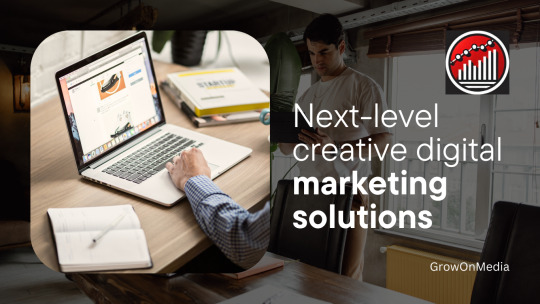
In today’s competitive digital landscape, capturing genuine leads is the lifeblood of business growth. While many platforms promise results, Meta Ads (Facebook and Instagram Ads) stand out as an incredibly powerful engine for lead generation, connecting your brand directly with its ideal audience.
At GrowOnMedia.com, we don’t just run ads; we engineer robust Meta Ads strategies designed to convert casual browsers into high-intent prospects ready to engage. This comprehensive guide will walk you through the proven tactics for leveraging Meta Ads to fill your sales funnel with qualified leads, highlight the tangible benefits, and showcase why partnering with experts like us — and leveraging our strategic collaborations — is your fastest path to success.
Why Meta Ads Are Your Goldmine for High-Quality Leads
Gone are the days when Meta was just for personal connections. Today, it’s a sophisticated advertising powerhouse with unparalleled targeting capabilities. Here’s why Meta Ads for lead generation should be at the forefront of your marketing efforts:
Unrivaled Audience Reach & Precision Targeting: With billions of active users on Facebook and Instagram, Meta allows for hyper-specific audience segmentation based on demographics, interests, behaviors, and even custom audiences from your existing customer lists. This ensures your ads reach exactly who you want to reach — high-intent leads with a genuine need for your product or service.
Cost-Effectiveness and Scalability: Compared to many traditional advertising channels, Meta Ads can offer a significantly lower cost per lead (CPL). Furthermore, campaigns are easily scalable, allowing you to increase your budget and reach as your business grows and your ad sets prove profitable.
Diverse Ad Formats for Every Funnel Stage: From engaging video ads and interactive carousels to instant lead forms that simplify the conversion process, Meta offers a rich variety of ad formats to capture interest at every stage of the buyer’s journey.
Direct-to-CRM Integration: Meta’s native lead forms and integrations allow for seamless lead capture directly into your Customer Relationship Management (CRM) system, enabling rapid follow-up and nurturing, which is critical for lead conversion.
Our Proven Meta Ads Lead Generation Strategy: From Clicks to Clients
At GrowOnMedia.com, our approach to Meta Ads lead generation is systematic, data-driven, and relentlessly focused on your ROI.
1. Strategic Audience Definition: Finding Your Perfect Customer
The foundation of any successful Meta Ads campaign is knowing your audience inside out. We dive deep into creating detailed buyer personas, leveraging Meta’s Audience Insights, and crafting custom and lookalike audiences based on your best existing customers. This ensures we’re not just casting a wide net, but precisely targeting those most likely to convert.
2. Compelling Creative & Irresistible Offers: The Hook That Converts
Even with perfect targeting, your ads need to stop the scroll. Our team of expert copywriters and designers crafts visually stunning and emotionally resonant creatives that grab attention. Coupled with this, we develop irresistible lead magnets and offers — think free consultations, exclusive webinars, comprehensive guides, or limited-time discounts — that provide genuine value in exchange for contact information.
3. Optimized Conversion Pathways: Streamlined Lead Capture
We specialize in setting up high-converting Meta Instant Forms, which allow users to submit their details with just a few taps, directly within the Meta app. This minimizes friction and maximizes conversion rates. For more complex lead qualification, we design and optimize dedicated landing pages that provide detailed information and a clear Call to Action (CTA). We also implement Meta Pixel and Conversions API to ensure accurate tracking and continuous optimization.
4. The Power of Collaboration: Amplifying Your Social Proof with IndianSMMServices.com
Building social proof and enhancing your brand’s authority on Meta platforms is paramount for increasing ad effectiveness and trust. This is where our successful collaboration with IndianSMMServices.com comes into play.
While Meta Ads drive targeted traffic, IndianSMMServices.com, as a leading SMM panel solution, offers a unique edge for rapidly boosting crucial social signals. Through our partnership, we can:
Elevate Social Presence: Strategically enhance your profiles with genuine engagement (likes, followers, views) that makes your brand appear more established and trustworthy to prospective leads.
Improve Ad Performance Signals: Higher organic engagement on your pages and posts can indirectly influence the perceived quality and reach of your paid ads, making them more effective.
Accelerate Brand Authority: A strong, vibrant social media presence built with support from IndianSMMServices.com reinforces your brand’s credibility, making your lead generation offers more appealing and converting.
This synergy allows us to not only target effectively with Meta Ads but also to present your brand as an undeniable leader in its space, building trust and driving higher lead quality and conversion rates.
Case Results: Real Impact, Real Leads
We believe in tangible results. While specific client data remains confidential, our Meta Ads lead generation campaigns have consistently achieved:
30% increase in qualified leads month-over-month.
15% reduction in Cost Per Lead (CPL) through continuous optimization.
40% improvement in lead-to-customer conversion rates.
These results are a testament to our strategic approach and the synergistic benefits of leveraging partnerships like the one we share with IndianSMMServices.com.
Your Path to Unstoppable Lead Generation Starts Here
Stop leaving valuable leads on the table. With GrowOnMedia.com’s expertise in Meta Ads lead generation, coupled with the strategic advantages of our collaboration with IndianSMMServices.com, your brand can achieve unparalleled growth. We deliver more than just clicks; we deliver ready-to-buy customers.
Ready to transform your lead generation strategy and unlock unprecedented business growth?
Don’t miss out on your next wave of high-quality leads. Contact GrowOnMedia.com today for a FREE, no-obligation Meta Ads Lead Generation Strategy Session. Let’s build a customized plan to fill your sales pipeline and accelerate your growth!
Click Here to Get Your Free Strategy Session!
0 notes